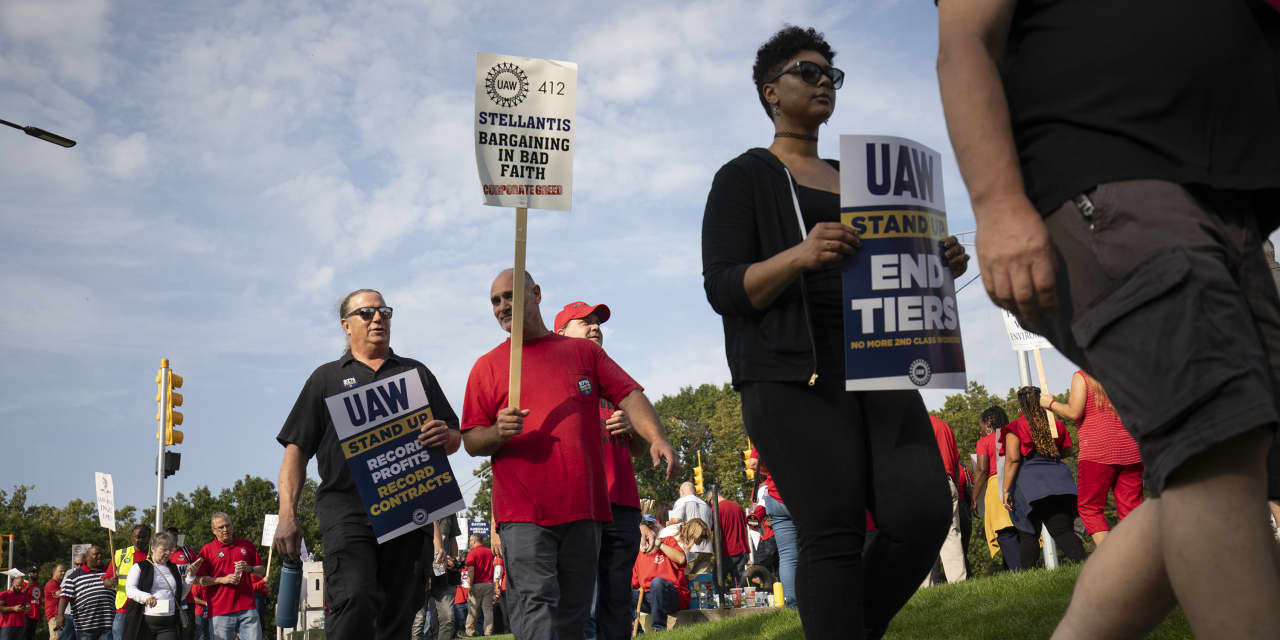Saturday marked the autumnal equinox, and fall is in the air: The weather is cooling, pumpkin spice is everywhere, and—as has happened every so often in recent years—the U.S. is nearing yet another government shutdown.
Congress isn’t expected to reach a compromise and pass a plan to keep the government open before Oct. 1, the start of the federal government’s new fiscal year.
A number of factors seem to be eroding confidence in lawmakers’ ability to reach a deal before next weekend. Among them, Republicans in the House of Representatives haven’t reached a consensus on a continuing resolution for spending amongst themselves, let alone one that would appease both sides of the Senate.
While government shutdowns reflect how partisanship and grandstanding have hamstrung American politics, they tend not to be too disruptive to markets. After all, they have become relatively commonplace, don’t last very long, only apply to nonessential services, and the government pays furloughed employees in full once normal operations resume.
While shutdown is “an ominous term, like the dozens of government shutdowns before it, it won’t have a material impact on the economy,” writes Sevens Report Founder and President Tom Essaye.
That doesn’t mean that it will be a complete nonevent, however. Historical data around the previous 19 government shutdowns show the
S&P 500
tends to decline in the week before a shutdown—a pattern that has become more pronounced since 1995, note analysts at Société Générale.
The anticipation of a shutdown seems to be worse than the event itself: During shutdowns since 1995, the
S&P 500
has actually rallied by an average of 2.3%.
The firm’s economist Stephen Gallagher predicts that this year’s shutdown will likely be a relatively short one, further blunting the effect on markets.
But this year is a bit different, because isn’t just the threat of a government shutdown grabbing headlines. There have also been three major labor strikes happening in the U.S., from entertainment-centric Writers Guild of America and performers’ SAG-AFTRA unions, and the United Auto Workers.
Much like the government shutdown, the economic fallout from the strikes likely will be limited. The strikes ultimately affect a small number of workers relative to the overall economy, though fewer automobiles manufactured would cloud near-term economic data.
And therein, argues Essaye, lies the rub: Strikes may not be big enough to derail the economy, but they obscure trends and information when the Federal Reserve needs the clearest picture possible of the economy.
“Both the shutdown and strikes stand to make the data 1) Less available, 2) Less reliable and 3) Less accurate,” he writes. “A government shutdown could result in economic data not being produced (including the jobs report) and the strikes will skew the near-term economic data.”
“Think of it this way: If the Fed is trying to engineer a soft landing for the U.S. economic airplane,” he adds, “a shutdown will cause partial instrument failure and the strikes make it foggy!”
Landing a plane in fog isn’t an impossible feat, of course, but few bulls would want the Fed’s balancing act to get even trickier at the moment. While a lack of data could make the central bank a bit more dovish in the near term, it likely won’t change its overall outlook of higher interest rates for longer.
To mix a metaphor, the shutdown and strikes could all end up being a tempest in a teapot. But it could still leave a bitter taste in some investors’ mouths.
Write to Teresa Rivas at teresa.rivas@barrons.com
Read the full article here









Leave a Reply